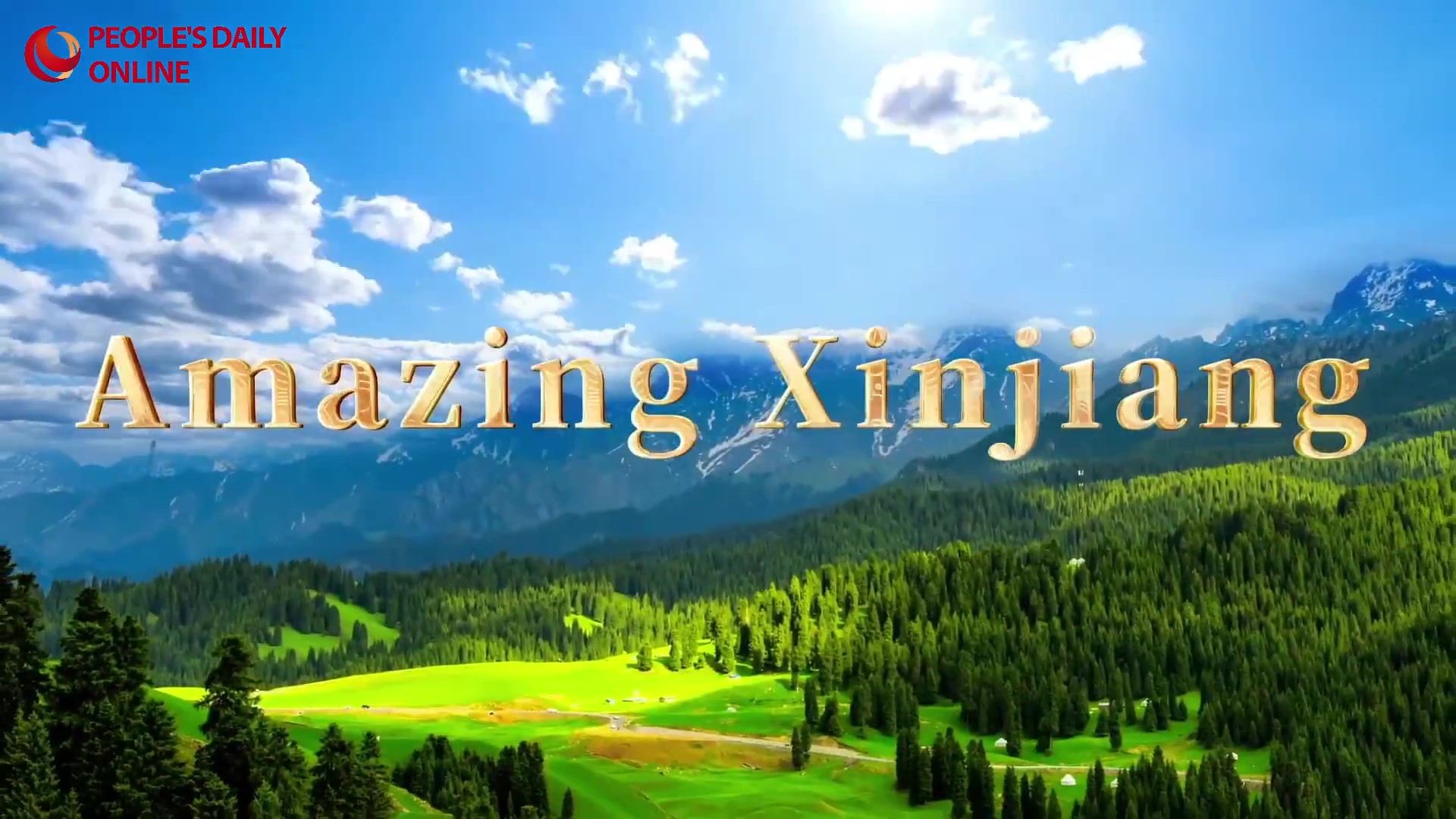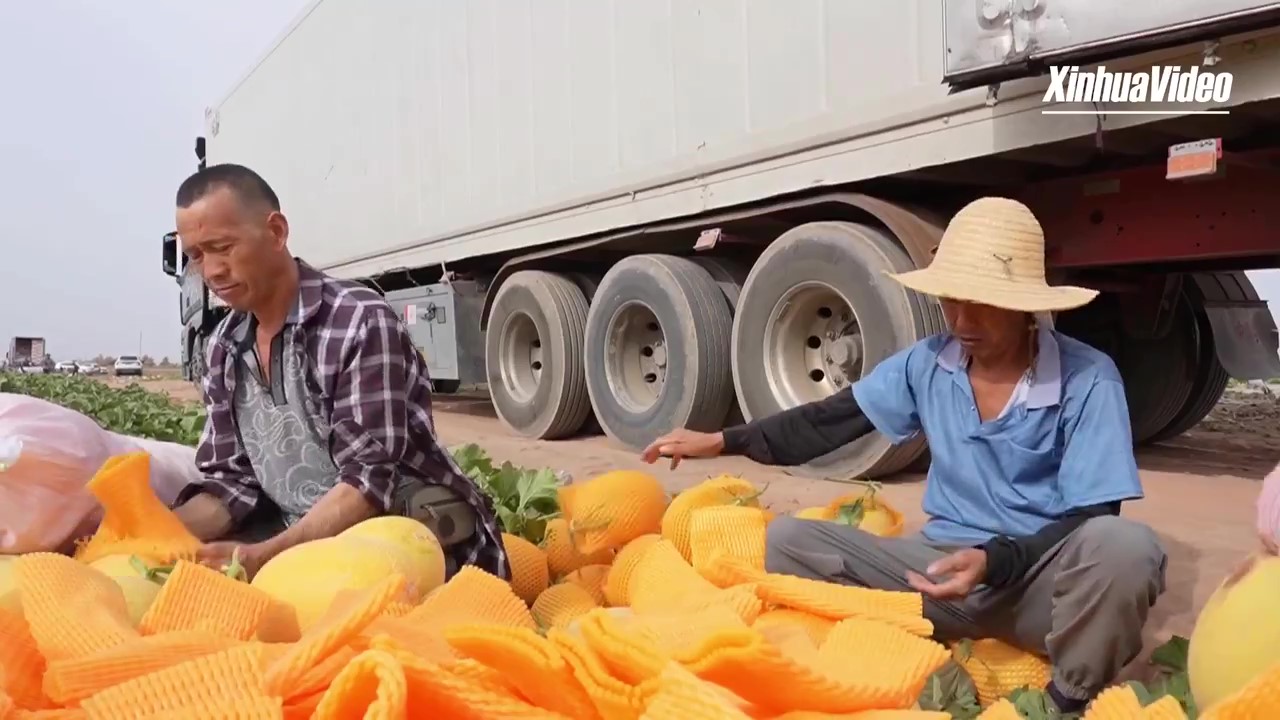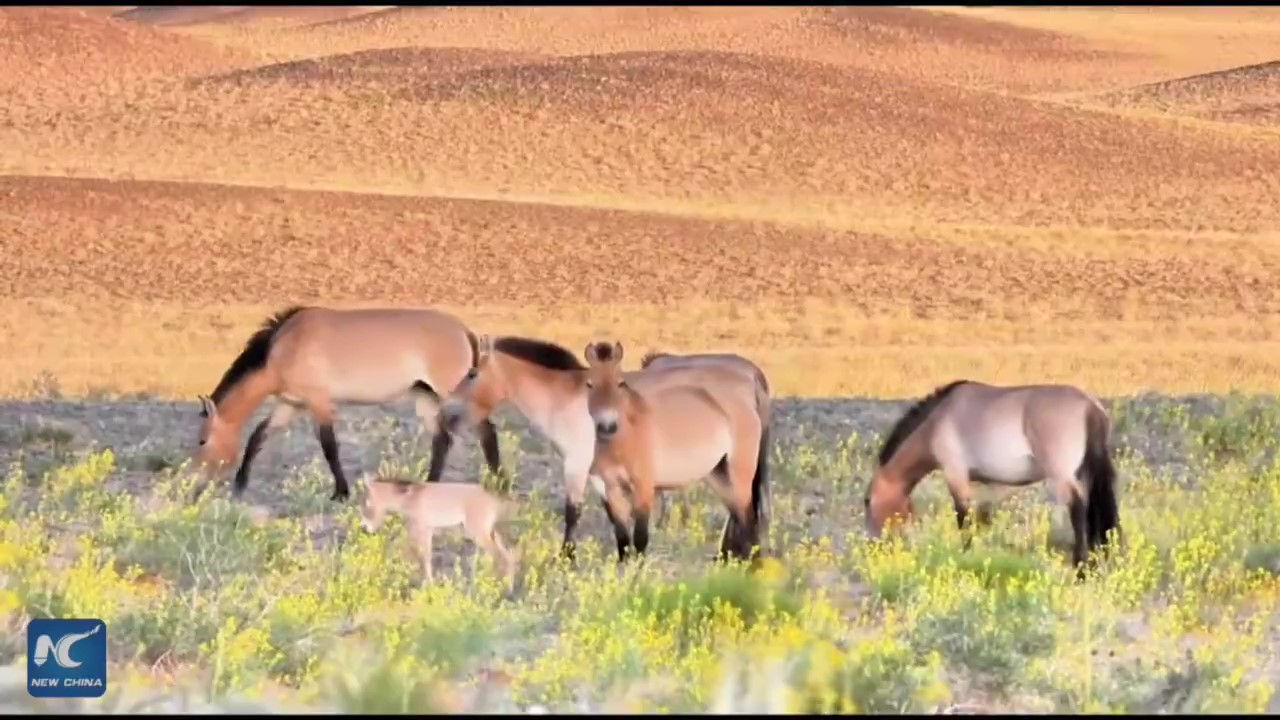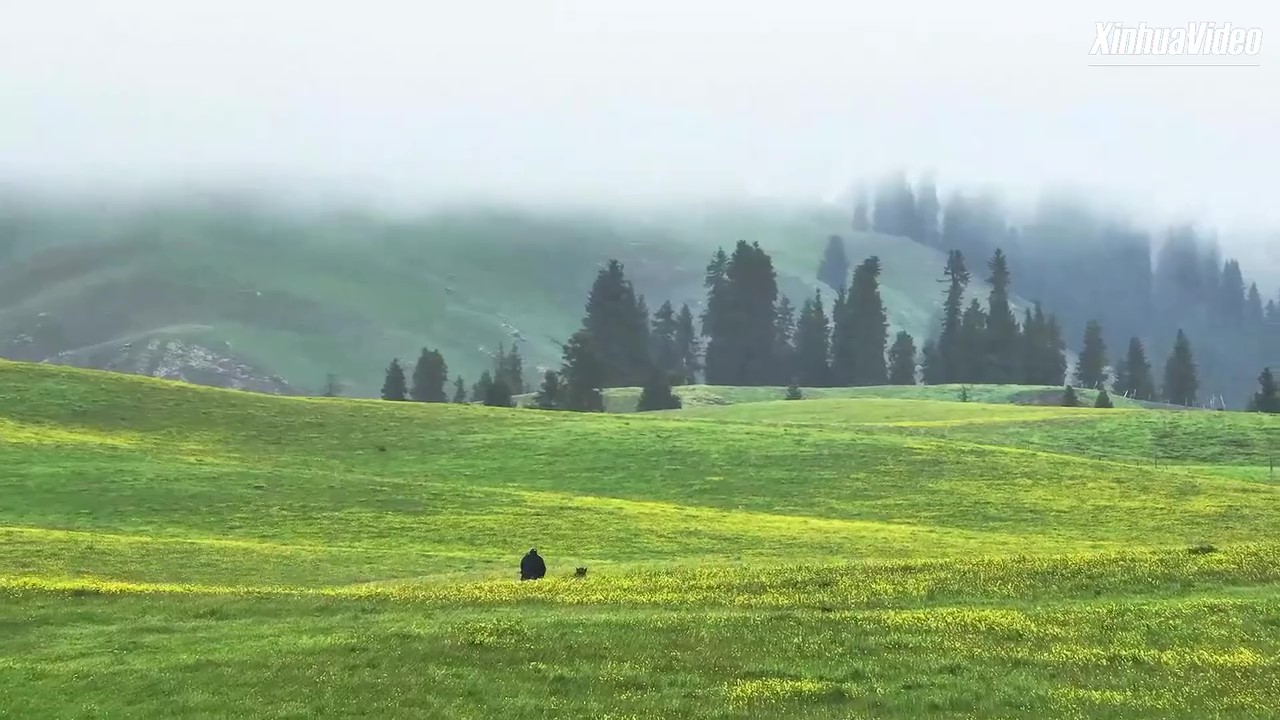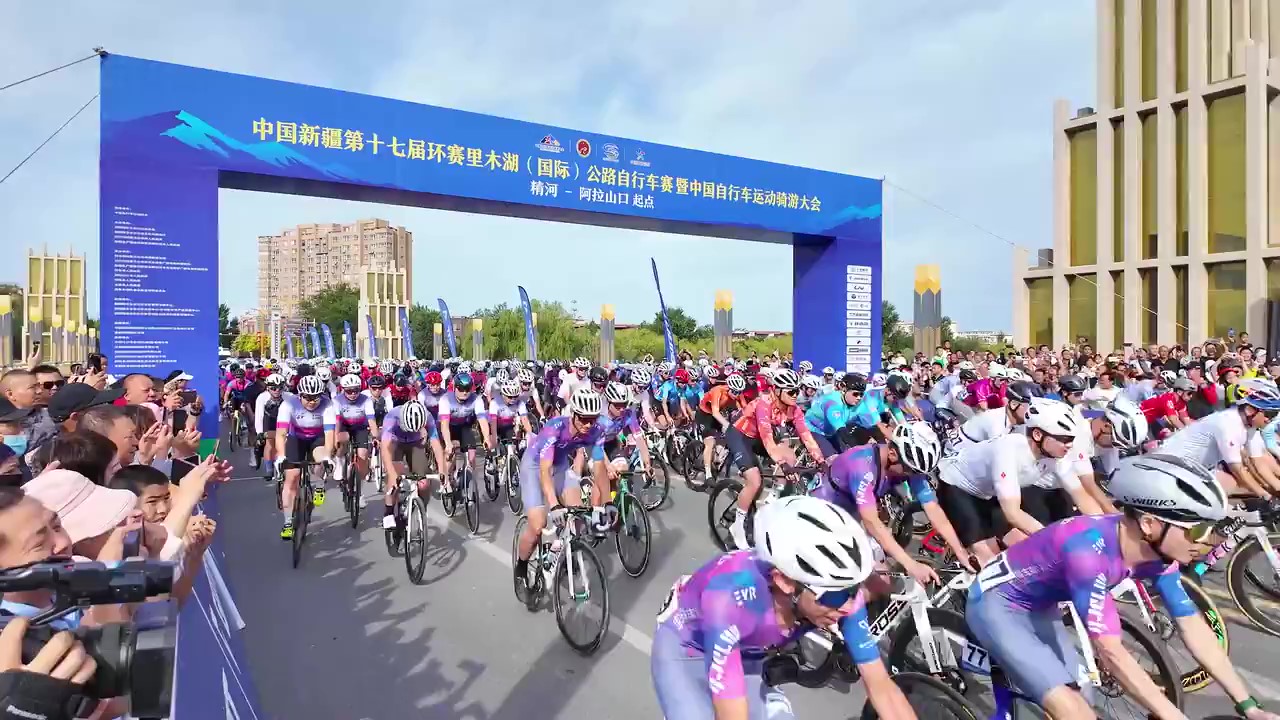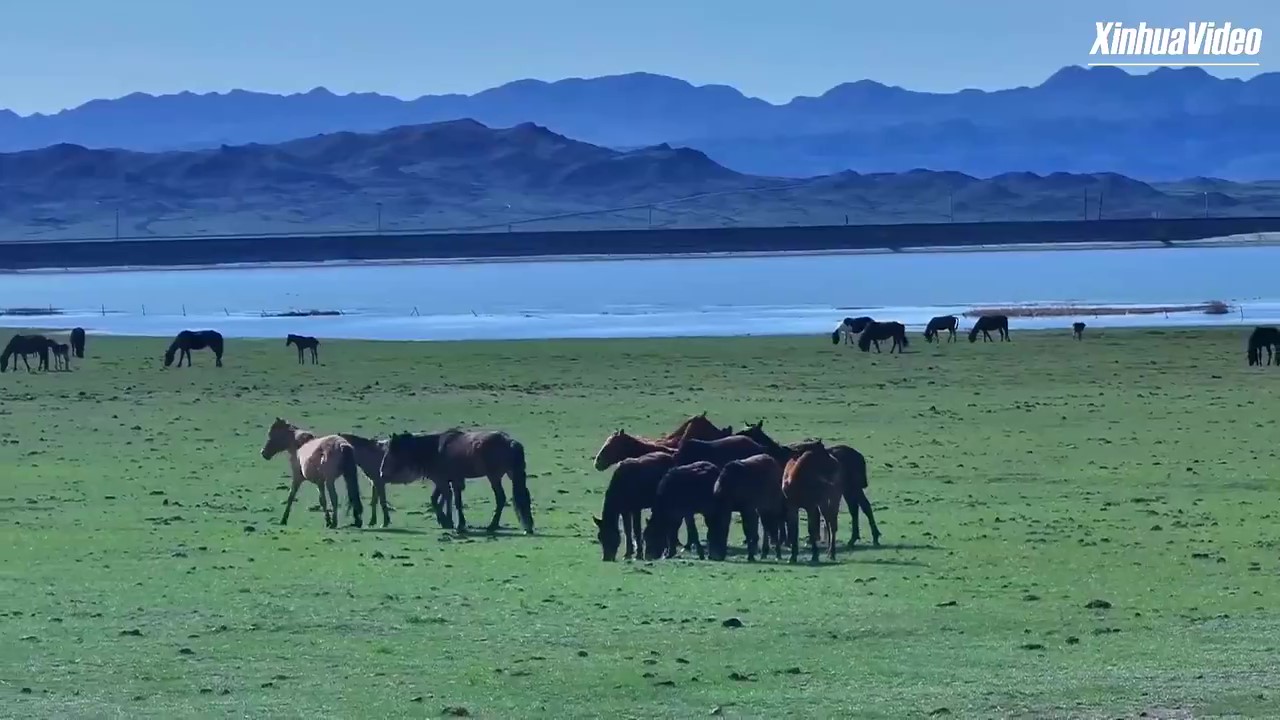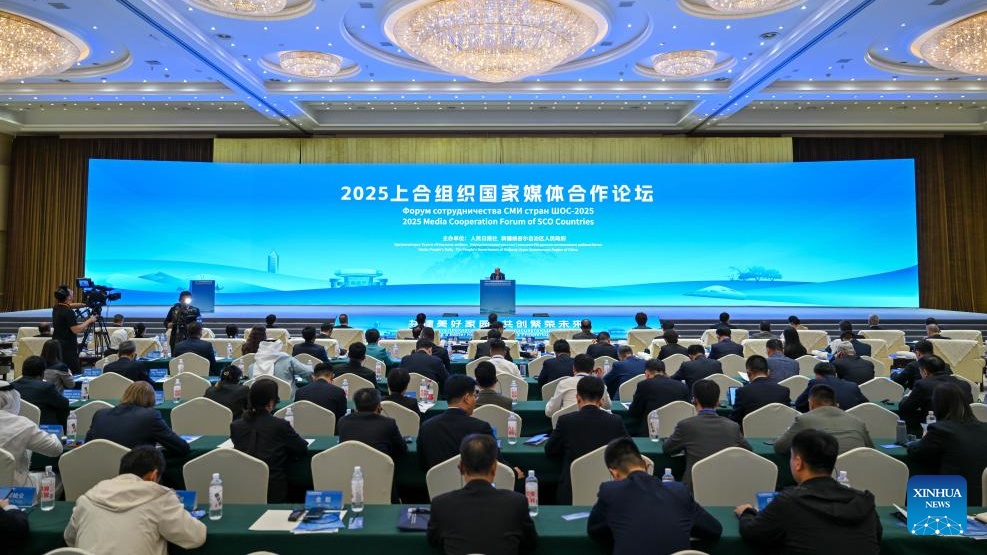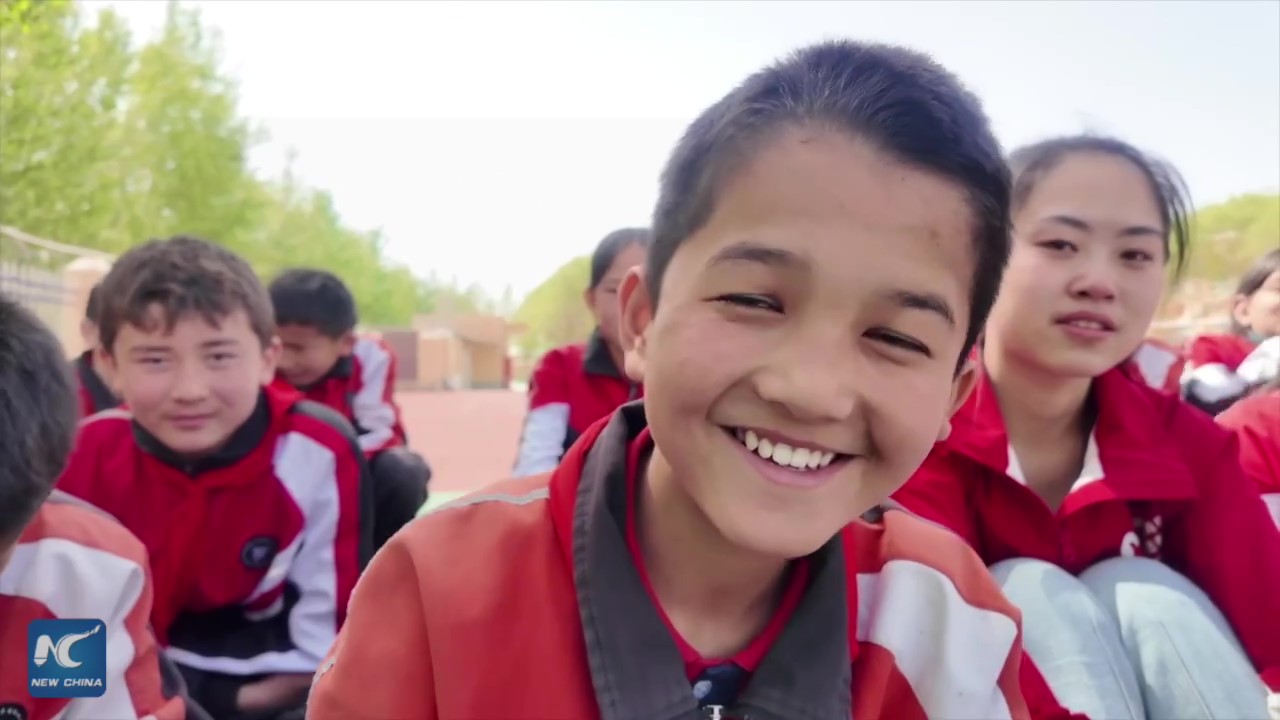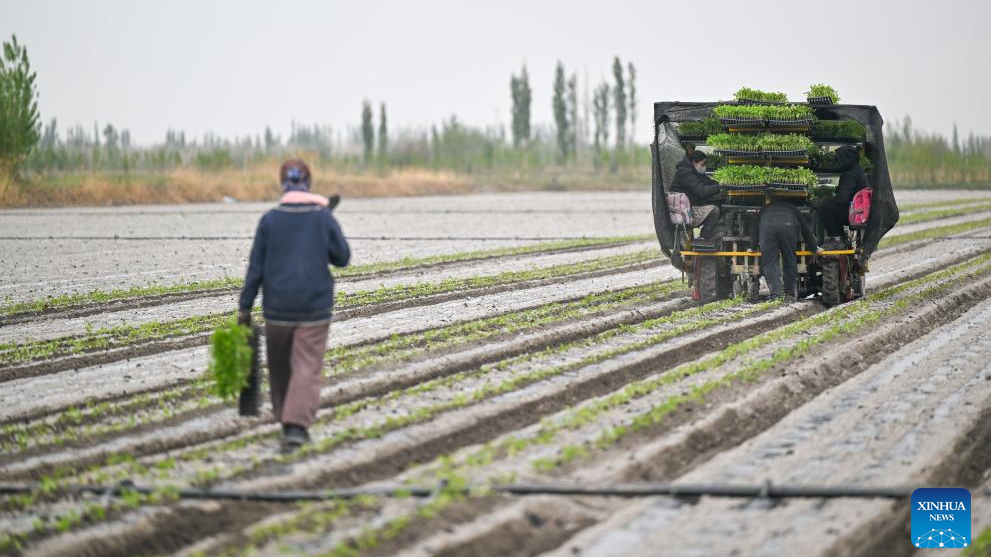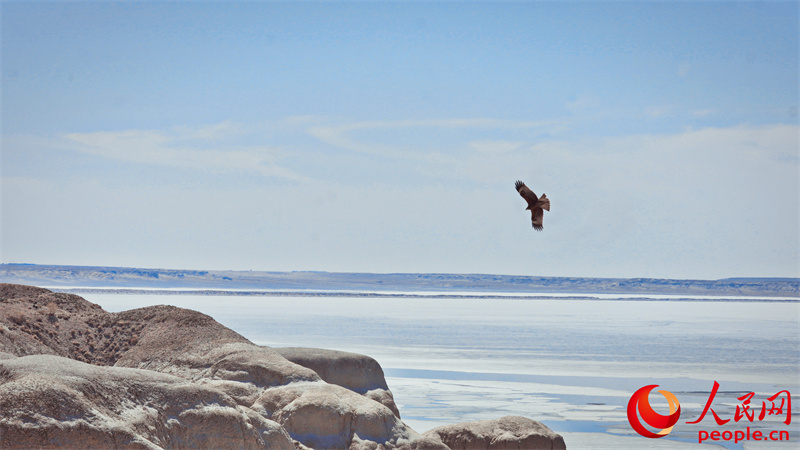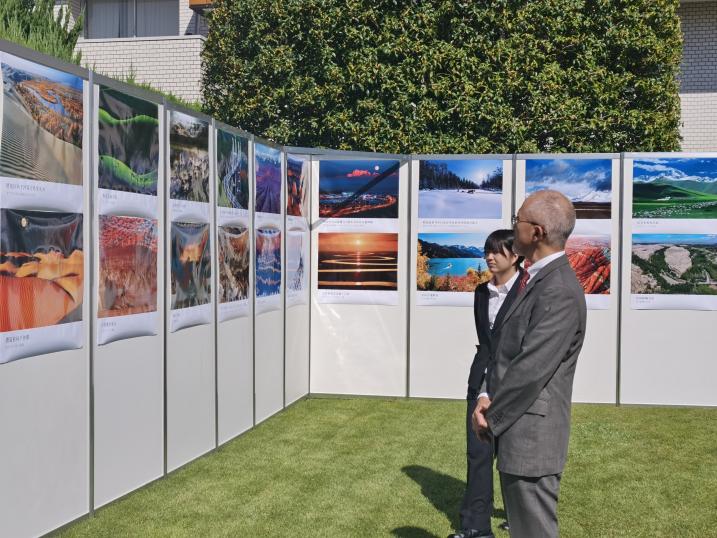
Attendees check out photos at an exhibition showcasing the Xinjiang Uygur autonomous region in Tokyo on Oct 15. [Photo by Jiang Xueqing/China Daily]
To Yasutaka Kojima, a cultural advisor of the regional government of Xinjiang Uygur autonomous region, Xinjiang has been undergoing very positive development, but most Japanese people know little about it. Some misleading information is also circulating in the media, leading to misunderstandings about Xinjiang.
Kojima was at a photo exhibition at the Chinese embassy in Tokyo on Tuesday. The exhibition is aimed at fostering a deeper understanding of the region and strengthening ties between the people of Xinjiang and Japan.
Xinjiang is home to multiple ethnic groups and various religions that coexist peacefully, said Nuerlan Abudumanjin, chairman of the committee of the Xinjiang Uygur autonomous region of the Chinese People's Political Consultative Conference. He noted that these groups live side by side, relying on one another economically and culturally enriching each other.
In 2023, Xinjiang's GDP reached 1.91 trillion yuan ($268.46 billion), with growth in GDP, investment, consumption, imports and exports, fiscal revenue, and residents' income ranking among the top five in China. In the first half of 2024, the region's GDP grew by 5.4 percent year-on-year.
Nuerlan, who led a delegation from Xinjiang on a visit to Japan, also highlighted the close and longstanding cultural and tourism exchanges between Xinjiang and Japan, noting that in recent years, these people-to-people and cultural interactions have become even more frequent and vibrant.
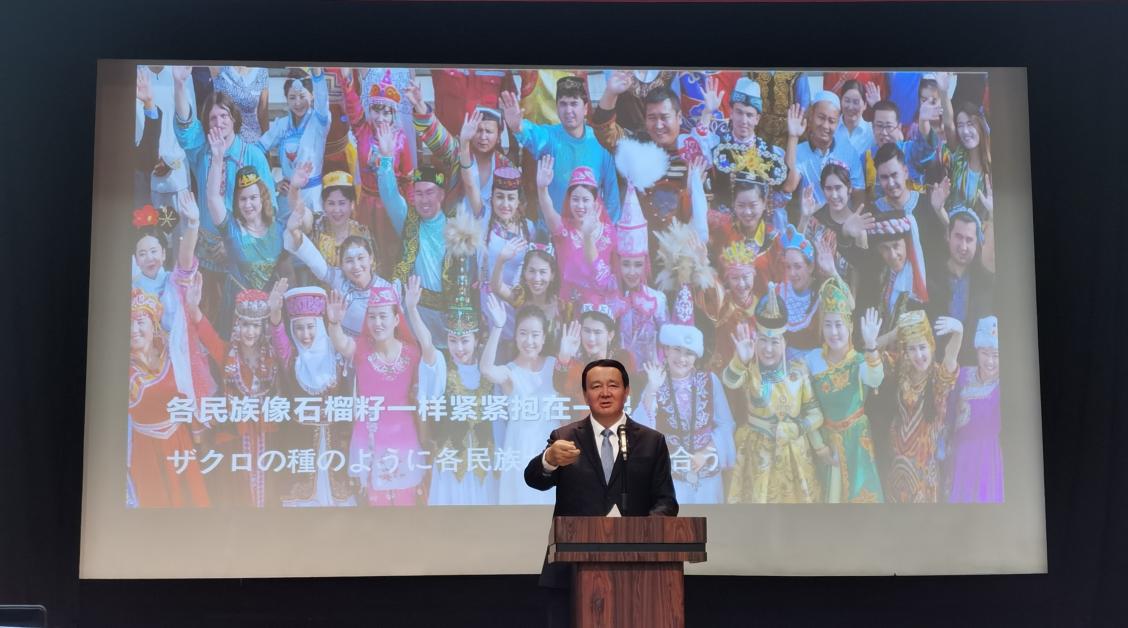
Nuerlan Abudumanjin, chairman of the committee of the Xinjiang Uygur autonomous region of the Chinese People's Political Consultative Conference, gives a speech at a photo exhibition highlighting the region on Oct 15. [Photo by Jiang Xueqing/China Daily]
Xinjiang has hosted a cultural and tourism event in Osaka, participated in the Tourism Expo Japan, and contributed artifacts to the Great Silk Road World Heritage Exhibition in Japan.
In 2023, the total trade volume between Xinjiang and Japan reached 1.27 billion yuan, a 31.3 percent increase year-on-year. From January to August this year, the trade volume rose to 1.42 billion yuan, reflecting a 132 percent increase. The growing momentum of economic and trade cooperation between the two sides continues to strengthen.
"Through this photo exhibition, we express our sincere hope to further expand cooperation with Japan in various fields, including economic and cultural exchanges, to promote friendly interactions, enhance mutual trust, and deepen the friendship between the people of both nations," Nuerlan said.
When Japanese people think of Xinjiang, they might envision the Silk Road, camels, and the sound of bells, but the region has seen significant changes in recent years, said Wu Jianghao, Chinese ambassador to Japan.
"Today, Xinjiang serves as a vital Eurasian corridor and a strategic gateway for China's westward opening. The region is rapidly modernizing across various sectors, with sustained economic growth, social harmony and stability, and strong ethnic unity, marking this the best period in its history," Wu said.
In 2023, Xinjiang received 265 million domestic and international tourists, a 117 percent increase year-on-year, and the region is projected to receive over 300 million visitors this year.
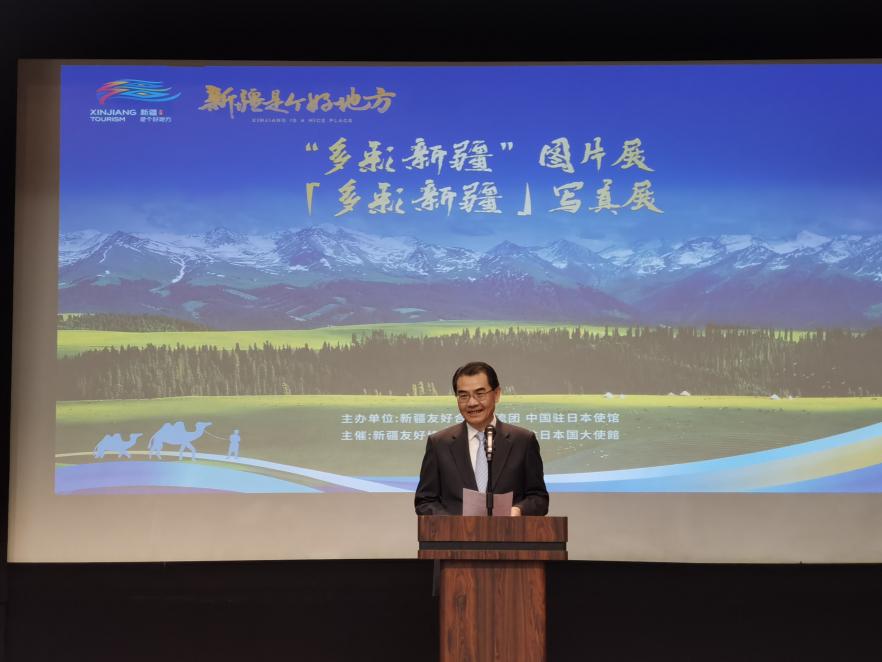
Chinese Ambassador to Japan Wu Jianghao speaks at a photo exhibition highlighting the Xinjiang Uygur autonomous region. [Photo by Jiang Xueqing/China Daily]
Wu assured that the Chinese Embassy in Japan will fully support and enhance cooperation between Japan and Xinjiang in areas such as; tourism, trade, modern agriculture and animal husbandry, culture, education, and youth exchanges.
Kojima, who has paid more than 150 visits to Xinjiang, emphasized that as an important hub of the Belt and Road Initiative in the new era, Xinjiang has great potential for development. He expressed his hope that this photo exhibition will help deepen people's understanding of Xinjiang and encouraged everyone to experience the real Xinjiang with their own eyes and by visiting it in person.
After seeing the photos of Xinjiang, Ambassador of Pakistan to Japan Raza Bashir Tarar said: "I'm simply overwhelmed because the image I have learned from the Western media was entirely different from what I've seen."
He highlighted that the region's rich history has been carefully preserved, and its remarkable development is a testament to China's policy of inclusion.
"The more people visit the place, (the more) they will realize that things are not the way they are presented," said Tarar.
He praised the autonomous region for its vast territory, stunning natural beauty, and deep historical significance, particularly its central role in the ancient Silk Road.
"Hopefully, there can be more events (like this), and more and more people can visit and see the beauty and development (of Xinjiang) for themselves," he said.
Kiyomi Seno, chairman of the Japan-China Society, said when Japanese people hear "Xinjiang", they often think of the Silk Road, deserts, minority dances and costumes. Japanese people are very interested in the music and dance of the Uygur people, he added.
"For the average Japanese person, Xinjiang feels like a distant and unfamiliar place. Presenting Xinjiang through pictures, as we are doing today, makes it easier for people in Japan to understand the current situation there. I hope such photo exhibitions can be held across Japan," said Seno.

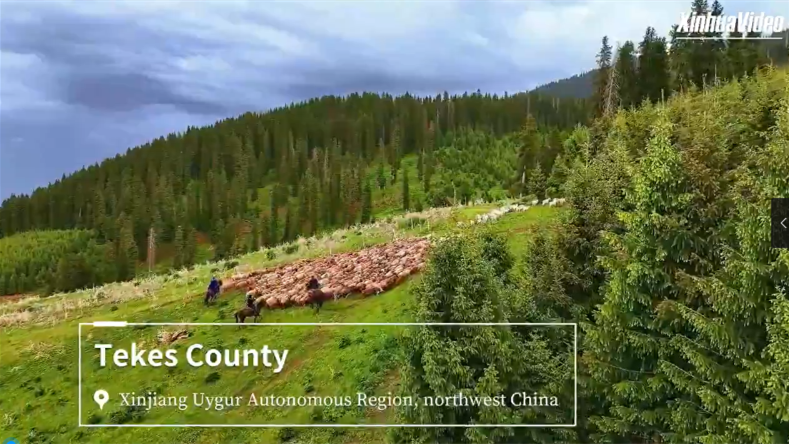
.png)
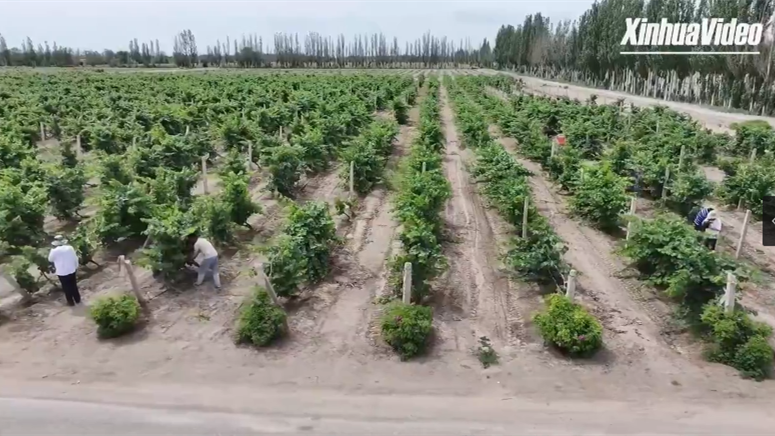
.png)

.png)



